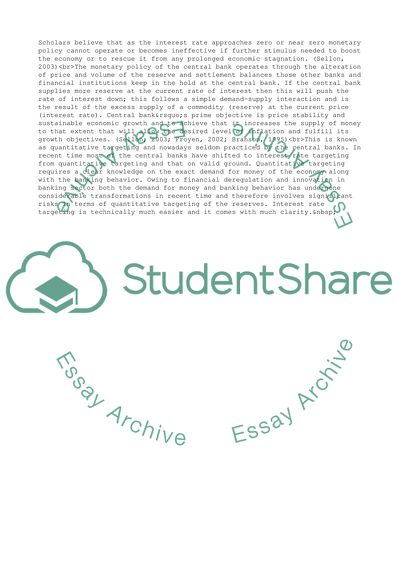Cite this document
(Monetary Policy when Short-Term Interest Rates are Close at Zero Essay, n.d.)
Monetary Policy when Short-Term Interest Rates are Close at Zero Essay. Retrieved from https://studentshare.org/business/1743478-critically-examine-the-methods-of-implementing-monetary-policy-when-short-term-interest-rates-are-close-or-at-zero
Monetary Policy when Short-Term Interest Rates are Close at Zero Essay. Retrieved from https://studentshare.org/business/1743478-critically-examine-the-methods-of-implementing-monetary-policy-when-short-term-interest-rates-are-close-or-at-zero
(Monetary Policy When Short-Term Interest Rates Are Close at Zero Essay)
Monetary Policy When Short-Term Interest Rates Are Close at Zero Essay. https://studentshare.org/business/1743478-critically-examine-the-methods-of-implementing-monetary-policy-when-short-term-interest-rates-are-close-or-at-zero.
Monetary Policy When Short-Term Interest Rates Are Close at Zero Essay. https://studentshare.org/business/1743478-critically-examine-the-methods-of-implementing-monetary-policy-when-short-term-interest-rates-are-close-or-at-zero.
“Monetary Policy When Short-Term Interest Rates Are Close at Zero Essay”, n.d. https://studentshare.org/business/1743478-critically-examine-the-methods-of-implementing-monetary-policy-when-short-term-interest-rates-are-close-or-at-zero.


